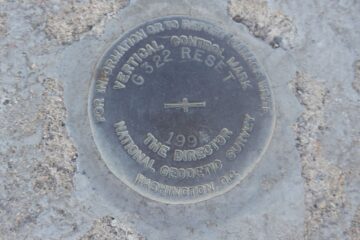We geocachers love to debate the best way to play the game. Some of us love the thrill of the race for the FTF, others go for the oldest caches around, and still others try to boost their numbers on power trails. The fact that there are many different ways to enjoy geocaching is one of the great things about this game.
In my day job, I’m a geography professor at Slippery Rock University, a medium-sized state college in Pennsylvania. It was perhaps inevitable that I’d eventually turn my attention to geocaching as a topic for research. I was interested in these debates about how people enjoy geocaching, as well as the different ways that people engage with the landscape around them when they’re out caching. While I prepare a formal report on my research for an academic journal, I wanted to share some of my findings with the geocaching community.
To investigate these questions, I used a technique called Q method. In Q method, you ask people to rank a set of statements about an issue according to how much they agreed with them. This ranking is called a “Q sort.” Once you have Q sorts from a bunch of people, you can use a mathematical operation called factor analysis to see if there are groups of people whose Q sorts were all similar – they ranked the same statements high, and the same statements low. Similar Q sorts mean those people had similar views about the topic at hand. We call these groups of like-minded people “factors.”
For this study, I came up with a list of 55 statements about things that might happen in a day of geocaching – things like “I found a cache with a high terrain rating,” or “I avenged a past DNF.” You can see the full list of statements here: https://drive.google.com/file/d/1X5p1w9bFucHEERSmcS5Few17bZBTb2py/view?usp=sharing I loaded these statements into an online Q sorting website, and shared it to a variety of local geocaching groups across the USA. In all, 71 people completed a Q sort.
When I ran the factor analysis, I found four factors – that is, four main viewpoints that people had about geocaching. Each of these factors is an average of the views of a group of people, so each individual person’s views may not match any factor exactly. But hopefully you will see some commonalities between the way you think about geocaching and one or more of these factors!
Before describing the individual factors, I should note that there were some areas of agreement among the people in my study. Nobody saw their most valuable geocaching experiences as involving a cache with a low terrain or difficulty rating, in a typical container, or in an easy location to reach. On the other hand, everyone thought it was great to find a very old cache.
Factor I: Going Places
People who agreed with the first factor emphasized the qualities of the places that geocaching brought them to. They enjoyed caches in locations of great natural beauty or historical significance, and liked caches that teach you about their location. This factor gave the highest ranking to finding a virtual cache, since virtual caches ask you to pay special attention to the unique history or architecture of a place. This factor also valued going to new locations for caches but lacked interest in close-to-home caches.
Factor II: Quality Hides
People who agreed with the second factor placed greater emphasis on the quality of the geocache itself relative to its location. Like Factor I, Factor II enjoys caches with naturally or historically significant and educational locations. But Factor II is more interested than its predecessor in caches with well-made containers, and especially values clever ways of hiding caches, which may require the use of stealth. This factor also placed emphasis on finding good items to trade in the cache. This factor has the least interest in “clearing out” an area by finding all of the geocaches there, since the quality of those caches may be mixed.
Factor III: Everyday Geocaching
People who agreed with the third factor distinguished themselves by an interest in making casual finds to be able to keep playing the game. This factor placed much more emphasis on finding a cache in the course of other life activities rather than dedicating large blocks of time to geocaching. Avoiding muggles is more of a priority if you’re looking to make a quick find, though this factor also doesn’t mind explaining geocaching to muggles. While the other factors harshly reject typical hides like a guard rail or lamp post, Factor III doesn’t mind so much, since they make for a less stressful experience. This factor is also notable for the statements that it ranked lower than the others, showing less interest than the other factors in challenge caches, the race to be “first to find” on a new cache, and returning to find a cache they had failed at on a past attempt.
Factor IV: Puzzle Lovers
The distinctness of the fourth factor serves to validate an observation made by many participants in geocaching discussions, that there is a special subset of geocachers who love to solve puzzles. Factor IV gave both desk puzzles (solved before heading out) and field puzzles (solved on-site) the highest ranking. This factor also enjoys caches with high difficulty and terrain ratings, and doesn’t mind smaller containers that can be more easily hidden in clever ways . This factor also placed the highest value on the satisfaction of finding a cache they had previously DNFed. Unlike the other factors, Factor IV does not have a goal of visiting new areas for geocaching.

As a geography professor, I’m especially interested in how these different ways of geocaching lead to different kinds of engagement with the landscape. Factor I obviously gives a lot of attention to the unique natural and historical features of the places they go geocaching. Factor II is more interested in the hide itself, but placing a clever and rewarding hide requires the hider to pay careful attention to the landscape – you’re not going to attract Factor II with a guard rail hide. Factor III sees geocaching as part of their everyday landscape, weaving it in among the places they were already going instead of making special trips just to geocache like the other factors do. And Factor IV can get a lot of enjoyment out of geocaching without even leaving home, if they have a good desk puzzle to solve!
I would count myself as closest to Factor I, but I’m glad we have people representing the other factors and enjoying geocaching in their own way. As long as nobody is armchair logging or breaking any laws in their search, there’s no wrong way to go geocaching!
Which factor do you consider yourself a part of? Why? Please let us know on Facebook (@GeocacheTalk) or on Twitter (@GeocacheTalk).
Stentor Danielson is an Associate Professor in the Department of Geography, Geology, and the Environment at Slippery Rock University, as well as the “count” half of oscar_and_count, a geocaching duo active in the Pittsburgh area since 2013.
The Geocache Talk blog wants your geocaching-related stories and insights. Please contact me, Angie (aka @GeoJangie and blogger on www.GeocachingJangie.com), to write a guest blog post or if you have any recommendations for subjects or authors. I can be reached via my email: JangieGoWest@gmail.com or through Instagram, Twitter, or Facebook.
Enter your email address below to receive each new Geocache Talk blog post directly into your inbox!




